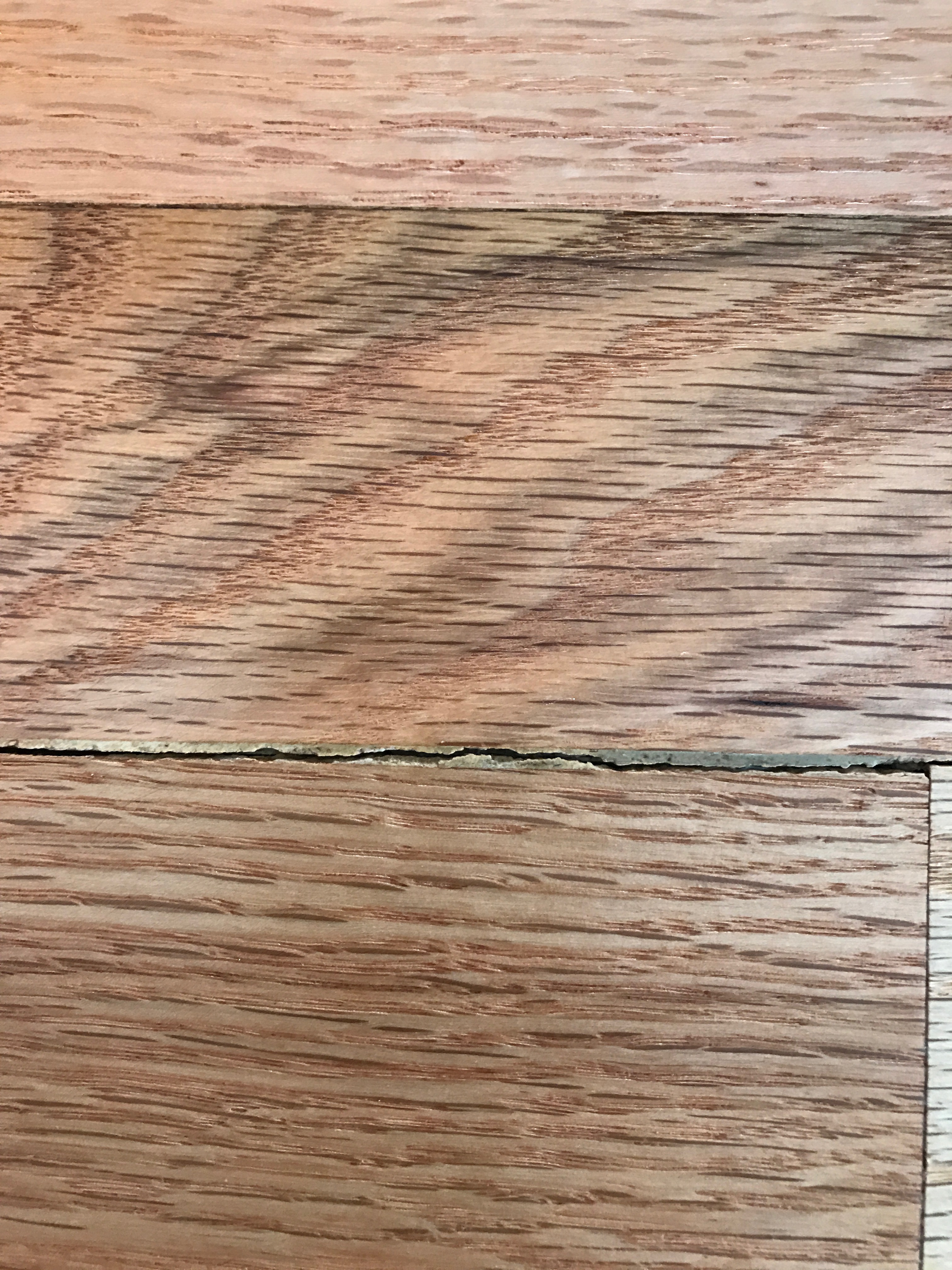It’s currently winter time as I write this and every winter I will receive a couple calls in regards to people’s hardwood floors having gaps in them. It is usually noticed by people who have had their floors refinished within that year. Let me address this occurrence and explain why it happens more so in the winter than in other times of the year. I will also speak to why gaps may appear in a floor during other times of the year as well.
There are primarily two reasons why gaps may appear in your hardwood floor, and they do not having anything to do with the sand and finish process. The first and biggest reason is due to the seasonal expansion and contraction of the wood flooring. Hardwood flooring is a product of nature and behaves as such. Wood expands when its moisture content rises and shrinks when its moisture content goes down. In the winter time we are running our heat more and the humidity in the home is driven down, this lowers the moisture content in wood as it’s trying to reach equilibrium with its environment. Then in the summer months when the humidity is higher, the wood takes on moisture and expands again seeking to reach equilibrium. So if a gap is filled during the sanding process and the wood expands or shrinks then that filler is pushed out and the gap is more visible. There is some parts of the country where they have really wild swings in humidity and the floors move a lot and thus there is a lot more gaps in a floor during certain times of the year as opposed to others.
Now it would be pretty difficult and impractical to limit the expansion and contraction of wood flooring to nothing but there is some methods that can be used to minimize gapping if it really is unpleasant in your eyes. The solution is to maintain the environment to remain the same throughout the seasons. This means adding a humidifier and dehumidifier to the HVAC system to help maintain the relative humidity of the area that the hardwood flooring is in. Some people realize and love the natural beauty of wood and are willing to accept the natural movements that are inherent of wood. Having gaps in your hardwood floor doesn’t really hurt anything and they won’t make your floor last any less. There are plenty of 100+ year old floors in this country with gaps in them that perform just fine.
The second big reason that a floor may develop gaps is from it being loose, either due to the way it was installed or the subfloor being loose. Back in the 50’s and 60’s a popular floor was a shorts floor. These are hardwood floors made up primarily of red oak or white oak or a combination of both, generally under 18 inches long with one finish nail per board. After years of expansion and contraction the wood flooring becomes loose and thus any filler applied to the gaps just bounces out. I’ve seen a filled floor lose all its filler in less than a month. The remedy to this is to replace the flooring completely and install according to modern day methods and standards.
You won’t be able to totally stop wood from being a natural product and so we recommend just letting it be and let it do what it wants to do and don’t worry about it. Wood is beautiful and having some gaps is just part of that beauty. We also recommend not filling gaps in a floor as sometimes not all the filler comes out and the gap becomes more of an eyesore as it looks like an earthquake fault line such as the one pictured at the beginning of this post.


